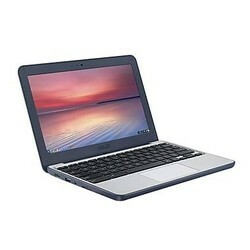Chromebooks

Overview:
Chromebooks are an inexpensive electronic learning tool and come in many form factors and at different price points depending on specifications. Entry level devices are priced in the $250- $400 range and should offer reasonable performance and a considerable lifespan. This document is designed to help you make the best buying decision to suit your needs.
Form Factor: Chromebooks are available in a number of physical formats and the correct type for your learner is dependent on how you see them using it.
- Classic Clamshell: look and feel like a small laptop and include a keyboard
- Foldable: offer a tablet or tent option and may include a stylus for input
- Screen Size: entry level Chromebooks start with an 11.6 inch screen
- Larger screen sizes may reduce battery life
- Touch: allow for input using fingers on the screen and may include a stylus
- Tablet: does not include a physical keyboard and uses an on screen keyboard instead
- A traditional external keyboard may be connected
- Typically lower performance compared to similarly priced Classic Clamshell models
Specifications:
Since most of the applications used on a Chromebook are Cloud based, performance is most greatly impacted by the reliability of your wifi and the speed of your Internet connection. Other factors to consider when choosing a device include:
- Battery Life: impacted by the processor type and screen size; batteries are typically charged each night for next day use so 8 hours of battery runtime is plenty
- Memory: typically 4 gigabytes but can be larger
- More memory allows more browser tabs and extensions to be used
- Storage: typically 32 gigs but can be higher
- Most content should be stored in GSuite Cloud and therefore local device storage is not typically used outside of temporary use
- When multiple users share a device more storage is used
- Some functionality such as using Android Apps will use additional storage for each user that has signed on and uses those types of apps.
- Processor: there is a balance between performance and battery life
- Mobile processors extend battery life but may be slower in performance
- Traditional processors often have a cooling fan which may be subject to damage
End of Life:
- Google supports Chromebook devices for a specified period of time after which important security updates and new features are no longer available
- Visit Google's Auto Updated Policy site to determine when you can expect a device to go End of Life
First Time Setup: The first account that signs into a Chromebook should not be your learner’s school account but instead should be a public Gmail account. The first account that signs in on a device receives a few extra privileges and can only be removed by wiping the device. Additional profiles are easier to remove and removing a user profile is a common troubleshooting step for schools and organizations.
Conclusion: Most people will choose the most economical Chromebook with 4 gigabytes of memory, 32 gigabytes of local storage space, and the physical characteristics such as screen size and keyboard type that they prefer. Technology is in a constant state of change and the planned lifespan of your device is an important factor to consider.

